
Using the left lane
We think of the left lane as the territory of thrill-seekers and speed demons—or, the domain of those who are late for work. However, in some states, driving in the left lane is completely illegal when not turning or passing another car. “Most drivers know that going above the posted speed limit is against the law, but not all drivers realize they can be ticketed even when driving at the posted limit—that is, if you’re in the left lane,” says Jake McKenzie, of Auto Accessories Garage. According to AutoInsurance.Org, it is illegal to drive in the left lane unless turning or passing in eight states, which include Illinois, Kansas, Kentucky, Louisiana, Maine, Massachusetts, New Jersey, and West Virginia. Travelers who are unaware of these laws may find themselves on the side of the road, receiving a hefty fine from the highway patrol. Learn about other little-known state laws.

Cutting through the corner gas station
Ever cut through a gas station on the corner when you’re in a rush? What you might not know is that this particular clever move is illegal in most states. Matt Pinsker, a traffic defense attorney and criminal justice professor at Virginia Commonwealth University, deals with many cases where offenders have made this move. He tells us that the gas-station-cut-through is illegal for a few reasons. “For starters, when persons cut through the gas stations they are often going at high speeds and might hit someone…it defeats the purpose of having a traffic light in that area at all,” says Pinsker. Additionally, it is a nuisance for owners of the station.

Being too loud
It’s no secret that the cops can pay you a visit for throwing a raucous party, but did you know they can pull you over for driving a noisy car? In 43 states, it is illegal to have mufflers that emit “excessive or unusual noise“—your old or modified car could get you a ticket! And forget about blasting music loudly on your stereo, as most states and municipalities have noise ordinances, and this too can get you fined. But blasting music isn’t the wildest thing that people do on the road; check out these 11 crazy things people have done while driving.
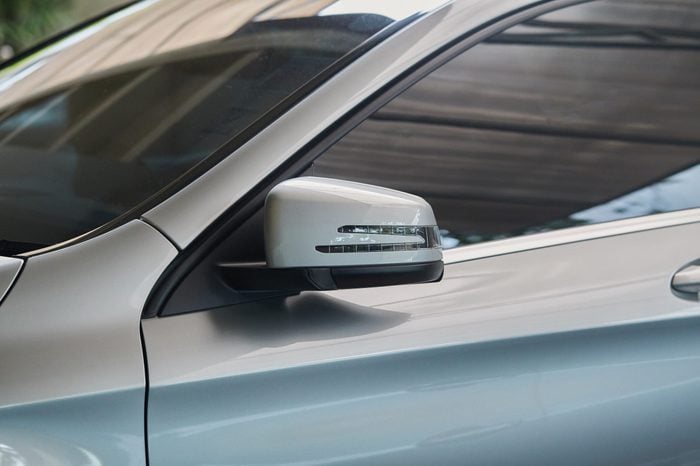
Having tinted windows
Sometimes being cool isn’t worth the cost. “There are many modifications that may get a motorist pulled over in certain states,” says Chris Goodnow of personal injury law firm GoodnowMcKay. Window tint that is too dark, he says, is reason enough to pull you over. Since window tint laws vary from state to state, this law is frustrating to many drivers. For example, a New York driver with tinted windows may cross over into the bordering state of Vermont, and not know that they’re committing a crime. The tinted windows that were legal a few miles ago become a criminal offense once across Vermont state lines. “Like, what can you do? Stop at the state line and rip off your tint?” says South Carolina Criminal Defense Attorney, Susan E. Williams.
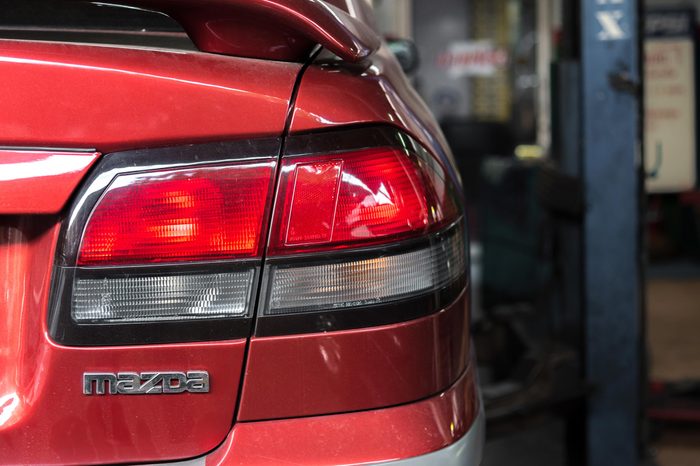
Not checking your tail lights
In the unyielding current of everyday life, it’s easy to forget to check your tail lights, even though a busted one can get you a citation. “In many states, it is illegal to have broken tail light enclosures,” says Pinsker. Since issues like these give the police reasonable cause to pull you over, McKenzie says “drivers should regularly do a perimeter check of all the lights on the outside of their vehicle.” Wondering why police touch your tail light when they pull you over? Or why having your tail light out is such a risk? Goodnow notes that having disabled lights can lead to a “really horrible crash where a high-speed vehicle hits a heavy stationary object,” but that these situations are “usually avoidable with a little effort and preventative action on the part of the motorist.” We suggest setting a monthly reminder to check on the health of your car, even if it’s just a quick check after your commute home from work.

Driving a friend’s jalopy
Pulled over in a friend’s broken-down car? Unfortunately, it won’t matter if you’re just the designated driver; you’re liable for any issues with your buddy’s vehicle, even though you haven’t been the one neglecting the maintenance. “Many laws about driving with bad equipment or stickers do not distinguish if the driver is not the owner,” says Pinsker. If you’re pulled over while driving the car, then the broken tail lights, heavily tinted windows, and broken mirrors are now your liability, and you can even receive a citation for their illegal condition. Hopefully, you have a loyal friend who will pay off the ticket for you.

Accidentally crossing into the shoulder
Criminal defense attorney Derek Andrews of Nave Law Firm tells us that while it’s common knowledge to stay within your lane, in New York State motorists can be pulled over for accidentally crossing over into the shoulder of the road. “New York vehicle and traffic laws require that drivers maneuver their vehicles entirely within a single lane… Police officers have been known to pull drivers over when their vehicles, even just a portion like a tire, crosses the fog line.” According to Andrews, since case law around this topic is ambiguous, it is easy for a driver to find themselves in a “nightmare” if they go into court unrepresented.
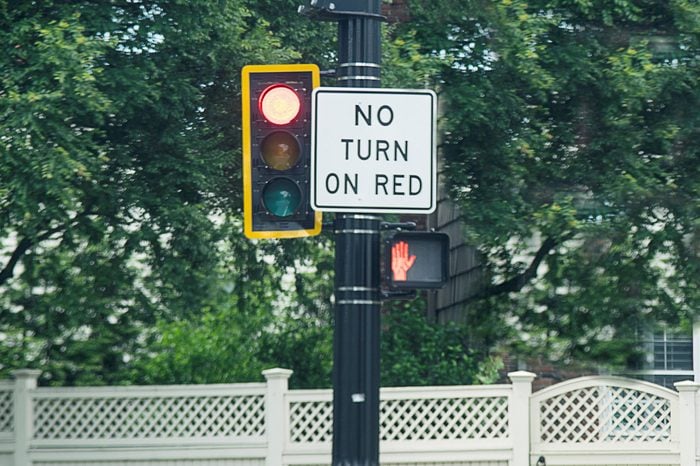
Making a right on red
There’s one thing you should always check before driving in a new state or municipality, according to McKenzie: Can you make a right turn at a red light? “For many of us, this legal maneuver is so second-nature we don’t even think twice about it,” he says. It seems as simple as knowing what red, yellow, or green traffic lights mean. “But in some areas such as New York, Virginia, North Carolina, Nebraska, Minnesota, and California, a traffic light might also feature a red right arrow.” For unacquainted motorists, this unusual road sign—which indicates that right turns on red are prohibited—might be confusing, and possibly lead to a ticket or a traffic accident.
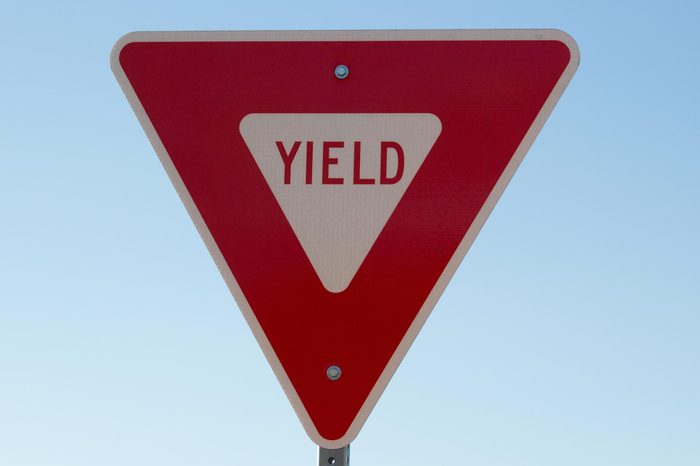
Not yielding properly
According to Goodnow, Arizona has some weird yielding laws. “The motorist is supposed to merge into gaps in traffic, or stop completely if there is no gap in traffic,” he says. According to Phillip’s Law Group, an Arizona law firm, “approximately 7,405 crashes were reportedly caused by the failure to yield the right of way.” Goodnow points to unfamiliarity as the reason for this: “Oftentimes, drivers have different levels of comfort for the flow of traffic they feel safe merging into,” he says. This easy mistake leads to rear-end collisions from other drivers, especially those from out of state. An added result can be suspicion from watching law enforcement officers who recognize that the motorist is nervous at the wheel. Know what to do in these scary driving scenarios.
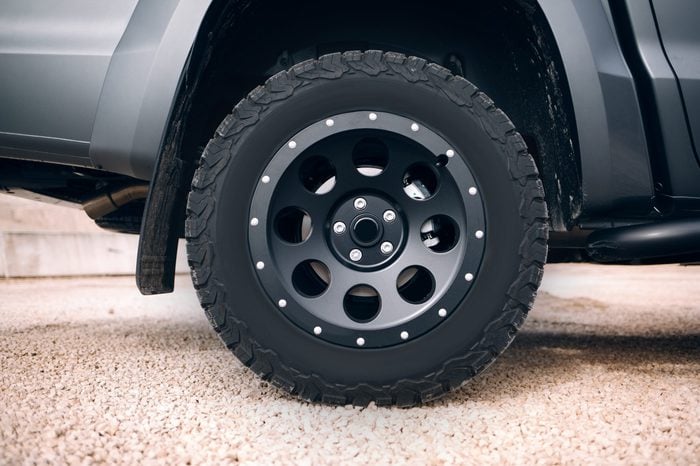
Driving a “lifted” truck or SUV
While many lift their trucks for cosmetic purposes, some also have their vehicles suspension-lifted to improve off-road performance. Unfortunately, this may make their on-road performance more suspicious to law enforcement. “Many people in lifted trucks or SUVs may be susceptible to a ticket and not realize a violation,” says Goodnow. “In many states when a truck is lifted, the lights must also be adjusted to point at a downward angle to avoid blinding the driver in front of them.”
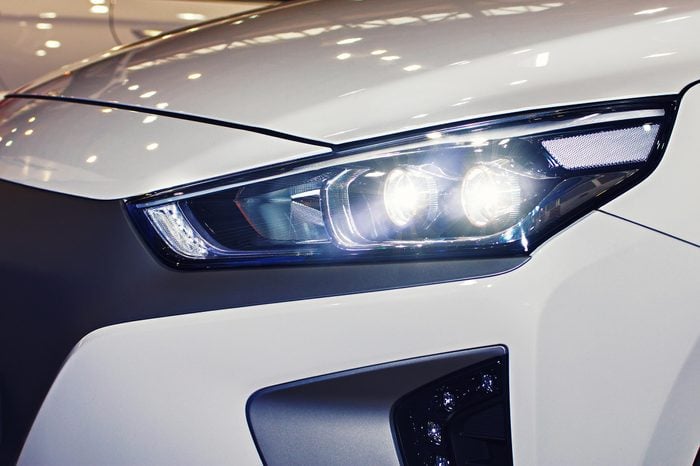
Not dimming bright lights
It’s common courtesy to turn off your high beam headlights while near other cars, but according to Williams, you can get pulled over if you don’t dim your bright lights “within 500 feet of an oncoming vehicle” in South Carolina. Williams also suggests that drivers use their low beams when “within two hundred feet to the rear” of another vehicle. So, how do officers decide when your lights are “too bright?” They use their own subjective judgment. Williams tells us that if you are driving at night, and your high beams “project into the eyes of the law enforcement officer,” you could risk being pulled over.
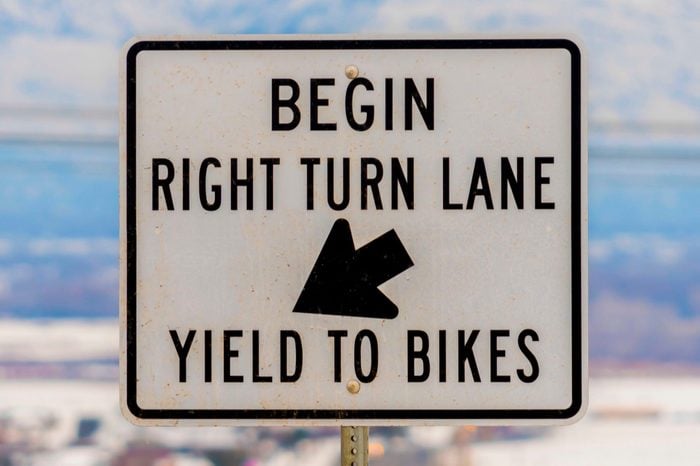
Being unfamiliar with traffic signs
“One uncommon sign, seen often in the Pacific Northwest, is the ‘Yield to Bikes’ sign,” says McKenzie. “Drivers from other parts of the country might not be used to even looking for cyclists, let alone yielding to one, but being aware and familiar with this sign could save lives.” If it’s been a few decades since Driver’s Ed, even the traffic signs that we see all the time can be confusing. Even the most skilled drivers might think “What’s that squiggly line?” or “What does that “T” symbol mean? It’s hard to tell without a driver’s manual/dictionary at your side, and this can cause a motorist to make illegal mistakes. Still confused? Find out the reason why traffic signs are designed in different shapes.
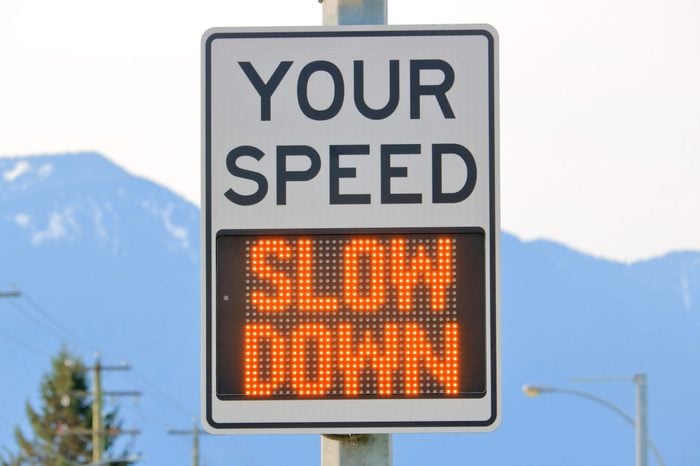
Speeding
Because of varying traffic laws across the United States, it’s always a bit nerve-wracking to drive on the highway outside of your home state. However, one rule is pretty much the same across all 50: don’t go over the speed limit. Unfortunately, drivers often speed without realizing it, and in some places, the punishment for this practice is more severe than in others. According to Pinsker, the state of Virginia has a law stating that any speeds over 80 mph are subject to not just a speeding ticket, but a class 1 misdemeanor—this can lead to up to one year in jail, and a “non-expungable criminal record of a misdemeanor conviction.” Want to become a safer driver? Check out these winter driving mistakes that are putting you in danger.